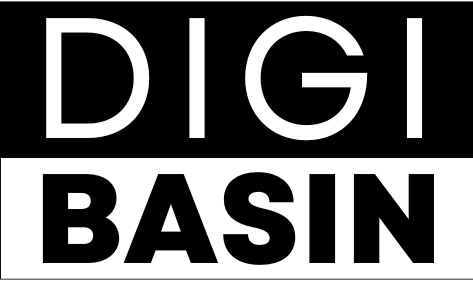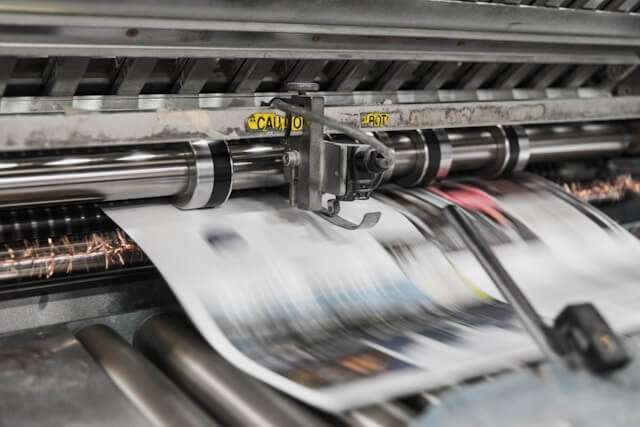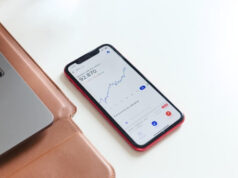One of the most exciting business models I’ve seen in recent years is combining print-on-demand (POD) with Amazon FBA (Fulfilment by Amazon). This model creates a bridge between creativity and logistics, enabling individuals to build passive income streams without holding inventory or managing complicated supply chains.
In this article, we’ll explore step-by-step how to integrate print-on-demand with Amazon FBA into your portfolio of income streams, even if you have little to no design experience. We’ll also look at the best strategies to price products, optimise listings, and scale for long-term success.
Why Print-on-Demand and Amazon FBA is a Winning Combination
Print-on-demand allows you to sell customised products like T-shirts, mugs, notebooks, and posters without holding any stock. Products are only created after a customer places an order, which reduces upfront costs dramatically. Meanwhile, Amazon FBA handles storage, packaging, and shipping, ensuring fast delivery through Prime and access to millions of loyal customers worldwide.
The global print-on-demand market was valued at $6.17 billion in 2022 and is projected to grow at a CAGR of 26.1% from 2023 to 2030 (Grand View Research). Pair this with Amazon’s e-commerce dominance, accounting for 37.6% of U.S. online retail sales in 2024 (Insider Intelligence), and you’ll see why entrepreneurs are rushing to integrate these two models.
When done right, selling POD products through Amazon FBA can be as scalable and rewarding as building a strong stock portfolio.
Step 1: Understand the Basics of Print-on-Demand
Before diving into Amazon FBA, let’s clarify how POD works. A POD provider such as Printful, Printify, or Gelato allows you to upload designs onto blank products. When someone orders, the provider prints and ships the item directly to Amazon’s warehouses (or to the customer).
The beauty of POD is that it eliminates risk. You don’t pay until a sale is made. For beginners, this makes it a low-barrier entry point into e-commerce. Transitioning into Amazon FBA is simply the next step for scaling.
Also Read:
- 10 Best E-commerce Payment Gateways for African Sellers
- How to Sell Digital Stickers on Etsy and Make $500/Month
- How to Make Steady Income Online with Digital Marketing
Step 2: Connect Print-on-Demand with Amazon FBA
To integrate print-on-demand with Amazon FBA, you’ll need to ensure your POD provider can sync with Amazon Seller Central. Services like Printful and Printify have direct integrations with Amazon, although approval from Amazon may take time.
Once connected, your product listings on Amazon automatically update with new designs. Orders from Amazon get fulfilled through your POD partner and shipped via FBA. This creates a seamless process where you focus on designs and marketing while Amazon and your print-on-demand provider handle the logistics.
Step 3: Choose Profitable Products and Niches
Success depends heavily on selecting the right niche. Look for products that are popular year-round but also have seasonal spikes. For example, T-shirts, hoodies, and mugs sell consistently, while holiday-themed designs see surges.
Tools like Jungle Scout, Helium 10, or AMZScout help you analyse product demand and estimate sales. According to Jungle Scout, 65% of Amazon sellers are profitable within their first year, with POD sellers falling into one of the fastest-growing categories.
If you’re unsure where to start, focus on evergreen niches like fitness, pets, or motivational quotes. These categories never go out of style and attract repeat buyers.
Step 4: Create Designs Without Design Skills
Many people hesitate because they lack graphic design skills. Fortunately, you don’t need to be an artist to succeed. Platforms like Canva, Creative Fabrica, and Vexels provide ready-made templates you can customise. Additionally, you can hire freelancers from Fiverr or Upwork for as little as £10–£20 per design.
AI tools such as MidJourney and DALL·E can also generate unique artwork within minutes. The key is to create simple, bold, and eye-catching designs that resonate with your target audience.
Step 5: Price Your Products for Profit
Pricing determines whether your POD business will scale or struggle. To price and sell lightroom presets online or POD products profitably, consider these factors:
- Amazon FBA fees: Includes storage, fulfilment, and referral fees.
- POD provider costs: Depends on product type and printing.
- Profit margin: Aim for at least 20–30% per sale.
For example, if a T-shirt costs £7 from your POD supplier and Amazon’s fees add £5, pricing at £18–£20 ensures you remain competitive while keeping margins healthy. Always check your competitors’ pricing before setting your own.
Step 6: Optimise Your Amazon Listings
A great product can fail if the listing is poorly optimised. Use Amazon SEO to improve visibility. Your title should include relevant keywords like “Funny Cat Mug” or “Motivational Gym Hoodie.”
High-quality product images are non-negotiable. Use mock-ups provided by your POD platform and consider lifestyle photos to show your products in real-world settings. Adding A+ Content on Amazon also increases conversion rates by up to 10% according to Amazon’s internal data.
Step 7: Leverage Amazon Ads
Organic reach is powerful, but paid advertising accelerates growth. Amazon Sponsored Products campaigns allow you to target keywords customers are already searching for.
According to Statista, Amazon’s ad revenue hit $46.9 billion in 2024, showing how competitive the space has become. However, beginners can still thrive with carefully chosen keywords and a modest daily budget (£10–£20).
Step 8: Build Passive Income with Automation
The goal is not just to sell but to create passive income. Automate where possible:
- Use POD platforms with direct FBA integration.
- Automate email follow-ups with tools like Klaviyo.
- Schedule product launches around seasonal spikes.
Over time, your designs accumulate, and sales continue without requiring constant attention. This compounding effect mirrors portfolio growth in trading, where small consistent gains add up.
Step 9: Scale Your Business Globally
One major advantage of Amazon FBA is global reach. With Amazon operating in 19 countries and serving over 310 million active users worldwide, scaling internationally is straightforward.
Start with the U.S. market, then expand to the UK, Germany, and beyond. Each market has unique trends, so tailor your designs accordingly. Scaling globally not only diversifies your revenue but also protects against downturns in one market.
The Mistakes to Avoid When Integrating Print-on-Demand with Amazon FBA
Even with the right approach, beginners make errors that slow growth. Avoid these:
- Ignoring research: Selling generic products without demand insights leads to wasted effort.
- Overpricing or underpricing: Both can harm sales; balance competitiveness with profitability.
- Neglecting reviews: Customer feedback drives trust; encourages buyers to leave honest reviews.
By avoiding these mistakes, your POD and FBA business will remain sustainable.
Why This Model Works for Long-Term Passive Income
For investors and traders like myself, passive income matters. A portfolio that includes both financial assets and e-commerce ventures is more resilient. Print-on-demand integrated with Amazon FBA offers:
- Scalability: Add unlimited designs without increasing overhead.
- Automation: Orders are fulfilled without your direct involvement.
- Diversification: Reduces reliance on one income source.
In essence, it’s like reinvesting dividends, your initial effort compounds into steady cash flow.
Also Read:
- Monetizing Your Expertise: A Guide to Selling Consulting Online
- How to Use ChatGPT to Earn Money Online
- 10 Best Tools for Starting a Virtual Assistant Business
Final Thoughts
Learning how to integrate print-on-demand Amazon FBA can be life-changing for anyone seeking passive income. By combining Amazon’s logistics power with POD flexibility, even beginners can compete with established sellers.
Start small, test different niches, and optimise your listings. With consistent effort, this model can generate income streams that complement your investments in stocks or other assets.
If you’ve been searching for a low-risk way to grow your income online, this is one of the most effective strategies available today.


















